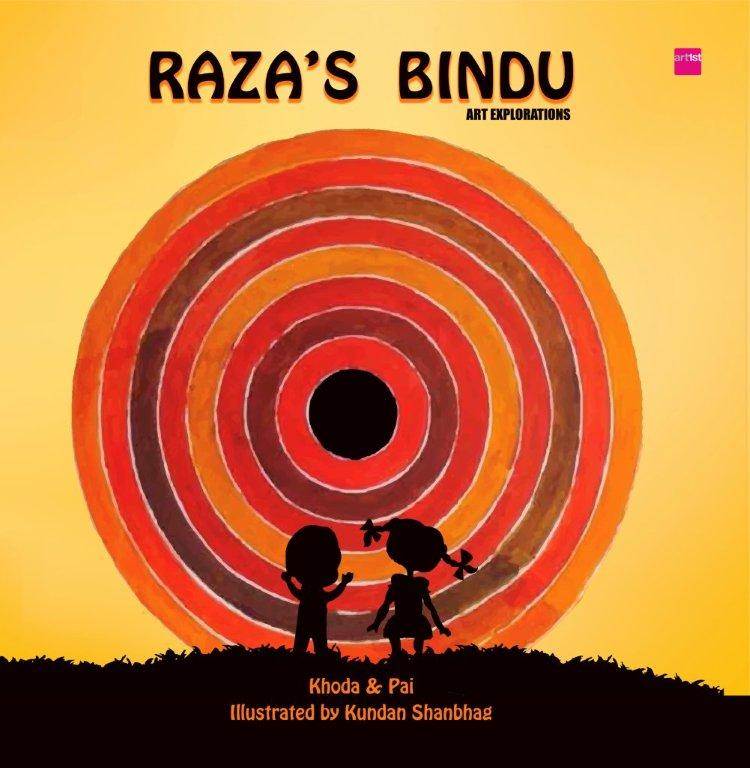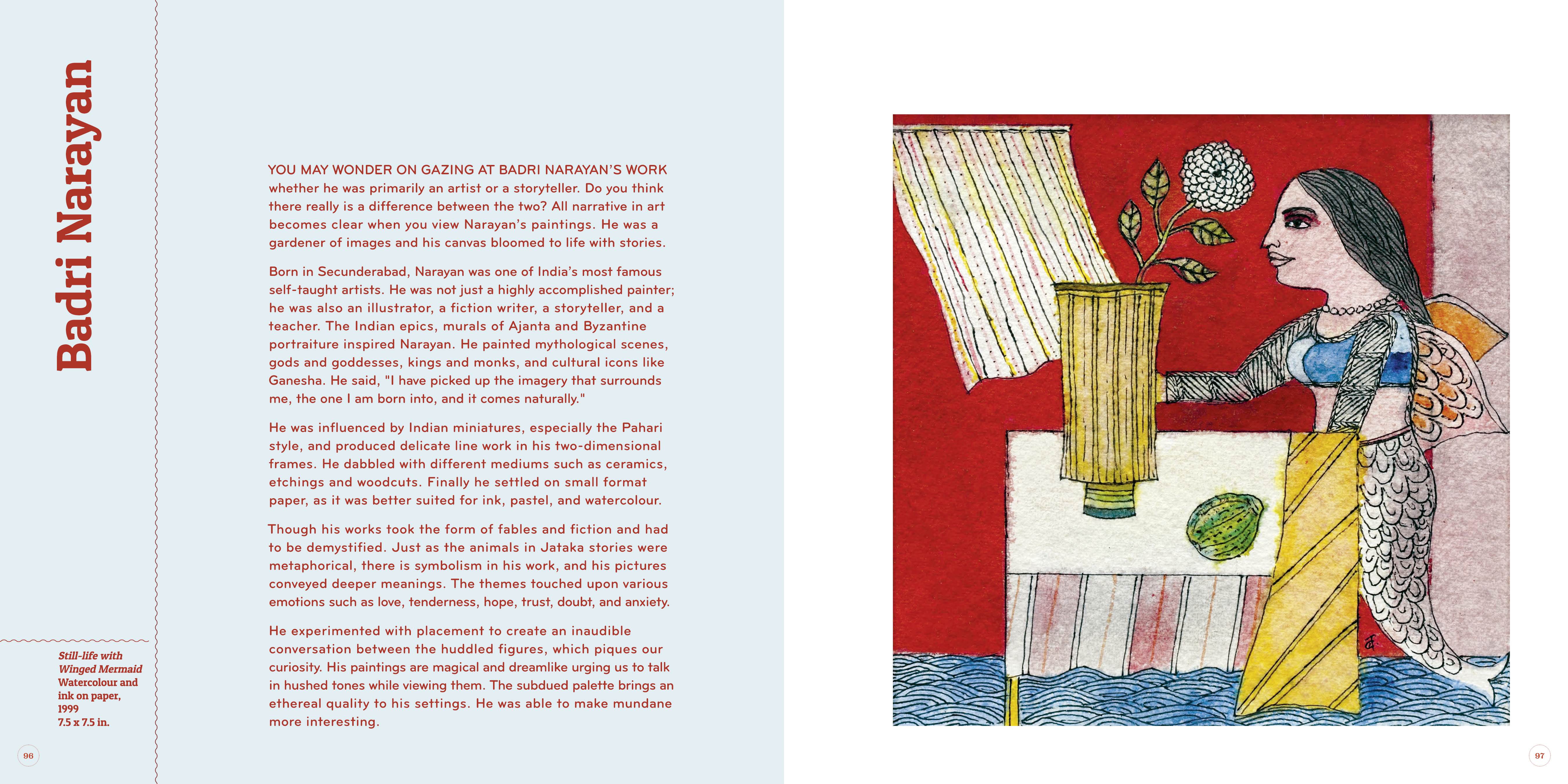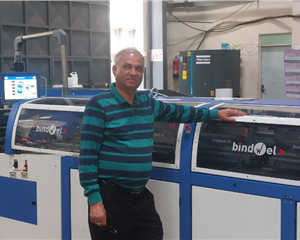A fun art book for grown-ups and children
Sriraam Selvam looks at two books for children both printed by Manipal Technologies one of which celebrates the work of Raza, who passed away a month ago in July - and was one of India's greatest modern artists.
23 Aug 2016 | By Sriraam Selvam
Raza’s Bindu, a gentle little book, lets children enter the world of India’s revered artist through a brief though stirring narrative. Vanita Pai, who has co-authored the book along with Ritu Khoda says, "The book helps one understand Raza’s inspiration and fascination with the Bindu, which featured in most of his work after the Eighties."
Bindu is an interactive workbook which blends art appreciation with activity for children who are six years and older. It introduces the complex concepts of Panchatatva, Bindu, colour theory in a simple and engaging manner. Raza, who was born in 1922 in the Madala district of Madhya Pradesh was not an easily accessible artist. However, the authors are well connected with the art fraternity due to their work in art education and were able to pull off the onerous task.

The book begins with Raza’s childhood when he discovered the Bindu at the age of twelve. He went to the Nagpur School of Art from 1939 to 1943 and then studied at the prestigious JJ School of Art in Mumbai from 1943-1947. Later, he became one of the six founding members of the avant garde Progressive Artists’ Group, which included MF Husain and F N Souza.
Pai adds, “Khoda is a close friend and we continue to work together. In fact this year we’ve become authors, self-publishers and distributors of our books!” Raza’s Bindu book was first published by Scholastic India in 2014. Pai and Khoda ended the contract with Scholastic in January 2016 and reprinted it under their own banner, Artfirst Publications.

The duo have also worked on Eye Spy Indian Art which traces the development of Indian modern art for children of age 12 and above. Open the book, and it is a treasure trove through which the reader discovers a most curious and diverting collection of paintings by great Indian artists, from pre-Independence time. The book has already garnered five star reviews in the first month of its release. “Interestingly, parents and adults are equally enjoying reading it,” says Pai.
Although, Eye Spy is published by Takshila Publication-a unit of Takshila Education Society, the authors have a joint distribution contract with the publisher. For now, the books are being distributed in the usual - online and book stores. Pai says, "A lot of school distributors are approaching us and they are very keen to add the books to school book fairs and mandatory reading lists. That channel is likely to open up very soon. Eye Spy is already art curriculum for Grades 6, 7 and 8 in four branches of DPS (school) and 2800 copies were distributed there.”
Through both Raza’s Bindu and Eye Spy Indian Art, Pai and Khoda have created a wealth of different ways of simplifying art for children: simple text, vibrant illustrations, visual do-it-yourself devices, experimental fonts, and literary wordplay. It also gives them an advantage as they are the first to venture into this category. “Internationally, publishers such as Phaidon, Taschen and Prestel are known for books on art. In India, it still remains a very uncomfortable territory with publishers. However, the response to both books proves there is need for such literature,” adds Pai.
Raza’s Bindu, for example, is a slim book and the words are few, but there is a reason one remembers it so vividly: the stunning visuals. Since the authors have so few words to play with and everyone must count, and so it does. How many books for six year olds make you wish you were six again. This one certainly does.
Eye Spy – Indian Art Production
Cover Design: According to Vanita Pai and Ritu Khoda, “the book challenges the norm from the word go”. A cover without a Title? Why not? The designers and authors decided to keep the cover minimalistic to attract children by design. They felt that a highly visual cover is in perfect harmony with the theme of the book.
They added an element of intrigue by showing a pair of blue eyes peering through die-cut sockets. The bold red cover colour was chosen to highlight the blue of the eyes. Further, the cover finish was kept matte and the eyes were given spot UV treatment to add a glint. At first glance, the eyes look human but on opening the cover, one is presented with a Kalighat painting of a cat. This surprises the reader and adds to children’s enjoyment. The book comes in four spine colour options.
The die-cut on the cover also invites them to “feel” the cover and therefore leads to a higher level of engagement. Children might also enjoy peering through the die-cut sockets (like in a mask). This way, the fun element is established from the beginning and implies that the following pages will be similarly exciting.
Production details: Eye Spy Indian Art was a challenging production job and the authors chose Manipal Technologies to produce the book. “Their technical expertise and availability of skilled manual workforce made it our only choice for the level of complication involved,” says Pai. Extensive manual tipping meant that the forms had to be perfectly organised for binding in the correct order.
Press: Heidelberg Speedmaster SM74
Cover die-cut had to be registered perfectly with the image on the inner second cover.
Tracing sheet (page 39) and Transparency sheet (page 43) had to be perfectly tipped in, covering only parts of the page.
All eight perforated, foldout section separators had to be tipped manually.
Die-cuts (page 65 and page 93) had to be registered perfectly with the image on the inner second cover.
Flaps on page 83 and 139-140 were manually pasted.
Stickers (with the “eyes”) had to be perfectly kiss-cut to match the images below that children will stick them over.
Production process and special paper: Aqueous coating on inside covers; UV spot treatment on eyes on inner cover; foldouts; flaps; die-cuts; stickers; perforation; tracing sheet; transparency sheet.














 See All
See All